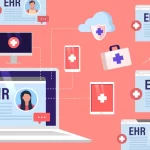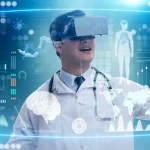
From Data to Diagnosis: The Rise of Public Health Informatics
September 11, 2023How Data is Revolutionizing the Healthcare Landscape: A Detailed Look at Health Informatics in Public Sectors
Introduction
The role of data in enhancing worldwide healthcare systems can’t be underestimated. So, what’s the recipe for using data to generate intelligent healthcare strategies and better patient experiences? Welcome to the world of Health Informatics in Public Sectors, an emerging domain that combines elements of healthcare, data manipulation, tech innovation, and effective communication. This guide will give you an insider’s perspective on what this exciting field involves, including available career avenues, practical applications, and steps to begin your journey.
What Does Health Informatics in Public Sectors Mean?
In essence, this discipline revolves around utilizing data, digital tools, and integrated information systems to elevate public health initiatives and research endeavors. It zeros in on holistic health at a community and population level, making it instrumental for tackling diseases and for aiding governmental bodies to bolster public health.
The Significance of Health Informatics in Public Sectors
What makes this discipline stand out is its ability to supercharge the precision, effectiveness, and reach of healthcare delivery systems. It goes beyond just medical treatment; it also makes essential life necessities such as food, housing, and work more accessible, and is crucial for warding off widespread illnesses.
Building a Public Health Data Management System: A Five-Step Process
As per guidelines from the Centers for Disease Control and Prevention (CDC), setting up an efficient public health data management system encompasses:
Strategic Planning: Defining the tech components to be brought on board, be it hardware, software, or communicative technologies.
Setting Data Norms and Interoperability: Instituting guidelines to safeguard data reliability and effortless amalgamation.
Data Confidentiality and Safeguarding: Enforcing mechanisms that shield data privacy across its entire life span.
Architectural Design and Deployment: Employing strategies and tech solutions that refine the transit and end-usage of data.
Data Presentation, Evaluation, and Dissemination: Capitalizing on analytics and business insight tools to churn out valuable, interpretable data summaries.
Practical Use-Cases
The application of Health Informatics in Public Sectors extends to:
Controlling Illnesses: Monitoring and lessening the spread of contagious illnesses.
Elevated Data Collection: Electronic Health Records (EHRs) make it easier to compile standardized data, thereby enhancing tracking and reporting capabilities.
Locational Analysis: Geospatial tech solutions allow for a nuanced understanding of trends and spatial patterns, invaluable for mitigating natural calamities and biochemical threats.
Career Paths in Health Informatics in Public Sectors
With the discipline gathering momentum, several career roles are up for grabs:
Specialist in Health Informatics: Avg. Salary – $91,323
Manager for Clinical Data: Avg. Salary – $116,878
Nurse Specialized in Informatics: Avg. Salary – $101,915
-Top Medical Tech Executive: Avg. Salary – $161,518
Kickstarting Your Career
Entering this domain requires a foundation in either healthcare services or data science. Depending on your preference, you might want to consider undergraduate, associate, or vocational certification programs in either data science, computer studies, or healthcare-related disciplines.
Final Thoughts
The role of Health Informatics in Public Sectors is defining the next era of healthcare, providing revolutionary changes by capitalizing on data-based intelligence. Whether you are a healthcare expert aiming to become data-savvy or a tech buff looking to positively affect public health, this is a field rife with chances to contribute meaningfully.

















